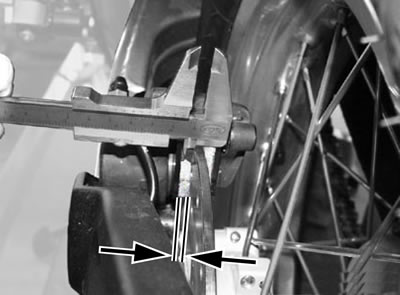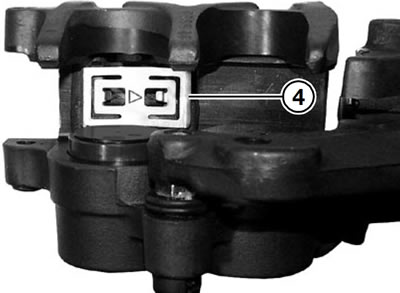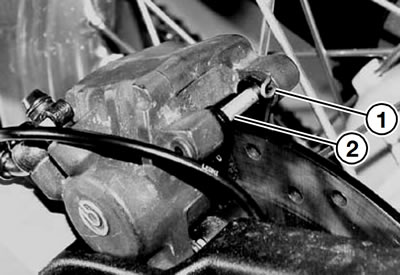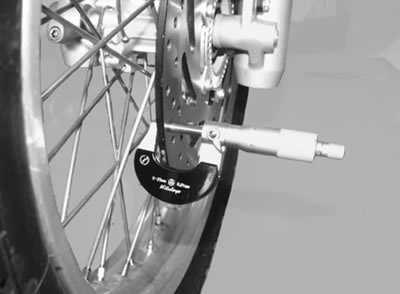Checking brake pads for wear
Brake pads, front brake

Visually inspect the brake pads.
The brake pad wear marks (arrows) must be clearly visible.
Brake pads, rear brake

Measuring brake pad thickness (arrows).
Minimum pad thickness: 1 mm (0.04 in)
Replacing brake pads
Cauton!
- Do not operate the brake when dismantled.
- Do not permit the brake pads to wear past the specified minimum thickness.
- Always replace the brake pads as a complete set.
Brake pads, front brake
Press the brake calliper against the brake disc in order to force the pistons back.

Remove keeper (3).
Drive out retaining pin (2).
Remove the brake pads.
Remove fasteners (1) and remove brake calliper.

Make sure that spring (4) is correctly seated and installed right way round: engraved arrow must point in forward direction of travel.
Install the brake pads.
Install the keeper and the retaining pin.
Install brake calliper.
Operate brake several times until brake pads are correctly seated.
Tightening torques:
- Brake calliper to fork slider tube: 41 Nm.
Brake pads, rear brake
Press the brake calliper against the brake disc in order to force the pistons back.

Remove keeper (1).
Drive out retaining pin (2).
Remove brake pads.
Installation is the reverse of the removal procedure: pay particular attention to the following.
Operate brake several times until brake pads are correctly seated.
Checking the brake discs
Carefully check the brake discs for cracks, damage, deformation and scoring.

Measure the thickness of the brake discs at several points with a calliper gauge.
Brake disc wear limits:
- Front brake disc: 4.5 mm (0.18 in)
- Rear brake disc: 4.5 mm (0.18 in)
